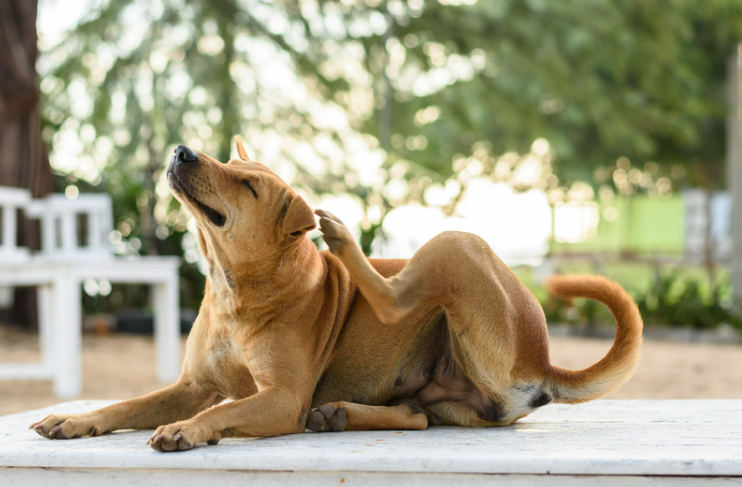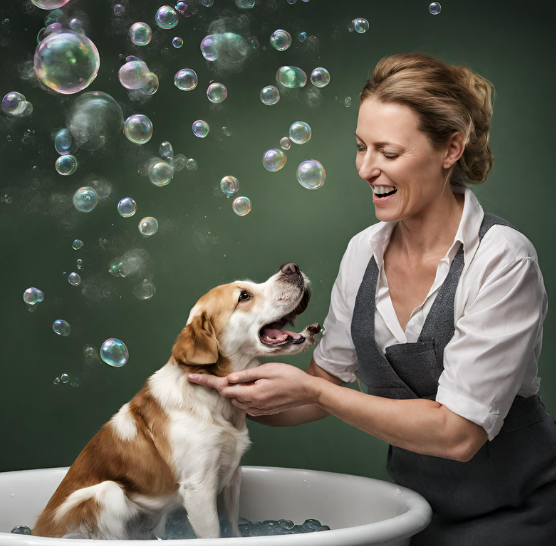Introduction: Unpacking the Flea Dilemma
Welcome to our comprehensive guide on tackling the challenging issue of fleas, particularly when your furry friend, who has fleas, shares your bed. This scenario is more common than you might think and requires immediate attention. Not only do fleas cause discomfort to your dog, but they can also become a nuisance in your home, especially in places as intimate as your bed. Fleas, known for their quick breeding and resilient nature, can turn a small problem into an infestation in no time. Understanding the gravity of this situation, our goal is to arm you with effective strategies to address and prevent flea infestations. By the end of this article, you’ll be equipped with the knowledge and tools to ensure a flea-free environment for both you and your pet. Let’s dive into the world of fleas and uncover practical solutions to keep these pesky intruders at bay. …Click Here to read more Insightful Flea Articles!
Understanding Fleas: A Closer Look
Fleas are more than just a minor annoyance; they are persistent pests that can affect your dog’s health and invade your living spaces. Let’s explore the flea’s lifecycle, how dogs contract them, and the telltale signs of an infestation. This knowledge is crucial in tackling the problem effectively.
Lifecycle of Fleas
Fleas undergo a complex lifecycle, starting as eggs, then transitioning into larvae, pupae, and finally adults. This cycle can span several weeks to months, depending on environmental conditions. The resilience of each stage makes fleas a formidable pest to eradicate.
How Dogs Get Fleas
Dogs typically pick up fleas from infested environments. These might include outdoor areas, other animals, or even your home if it’s already hosting fleas. Understanding these common sources helps in pinpointing and addressing the root of the problem.
Recognizing Flea Infestations

Identifying a flea infestation early is key. Look for signs like excessive scratching, red skin, and flea dirt (small black specks) in your dog’s coat. In your bed, you might notice tiny black or brown insects or flea dirt. Early detection leads to more effective control and prevention.
Armed with this knowledge, you are better prepared to tackle a flea infestation head-on. Remember, understanding the enemy is the first step to winning the battle against fleas. Let’s move forward with practical solutions to rid your beloved pet and your home of these unwelcome guests.
Immediate Actions: Steps to Take Today
Addressing a flea infestation involves prompt and decisive action. Here are immediate steps you can take to alleviate the situation for your dog and reclaim your bed from these persistent pests.
Treating Your Dog

The first line of defense is treating your dog. Consult your vet for recommended flea treatments, which may include topical solutions, oral medications, or flea collars. These treatments are effective in killing fleas at various life stages and provide ongoing protection against future infestations.
Cleaning Your Bedding
Fleas can thrive in bedding, making thorough cleaning vital. Wash all bedding in hot water and dry it on high heat to kill fleas and their eggs. If the infestation is severe, consider professional cleaning or replacing your bedding.
Isolating the Problem
While addressing the flea issue, it may be necessary to temporarily change your dog’s sleeping area. This prevents further spread of fleas to clean areas and allows you to tackle the infestation more effectively in a controlled environment.
By taking these immediate steps, you are actively combating the flea problem and setting the stage for a long-term solution. Remember, quick action can significantly reduce the severity of an infestation, making your efforts more effective in the long run. Let’s explore further strategies to ensure your home remains a flea-free zone.
Long-Term Strategies: Preventing Future Infestations
Successfully dealing with fleas is not just about immediate relief; it’s about implementing long-term strategies to prevent future infestations. Here, we delve into the essential practices that will help keep your home and your pet flea-free over time.
Regular Grooming and Care
Regular grooming is crucial in flea prevention. Consistently checking your dog’s coat for fleas, using flea combs, and bathing them with flea-repellent shampoos can significantly reduce the likelihood of flea infestations. This routine not only keeps fleas at bay but also promotes overall pet health.
Home Flea Treatments
Treating your home is just as important as treating your pet. Use flea sprays, powders, or foggers designed for home use, focusing on areas where your pet spends most of their time. Remember to follow safety instructions when using these products to protect your family and pets.
Regular Veterinary Check-ups
Routine vet visits are vital in maintaining your dog’s health and preventing fleas. Your vet can offer professional advice, recommend preventative treatments, and spot early signs of flea infestations. These check-ups are an integral part of a comprehensive flea control strategy.
Adopting these long-term strategies will greatly reduce the risk of flea re-infestation, ensuring a comfortable and healthy environment for you and your pet. Remember, consistency is key in flea prevention. Let’s now explore some natural remedies and alternative solutions to further bolster your flea defense plan.
Natural Remedies and Alternative Solutions
In addition to conventional methods, exploring natural remedies and alternative solutions can be a safe and effective way to combat fleas. These options are especially appealing for those seeking less chemical-intensive approaches. Let’s examine some of these methods to enhance your flea control arsenal.
DIY Flea Repellents
Natural flea repellents can be made using ingredients like lemon, lavender, and apple cider vinegar. These substances can be used to create sprays or washes that are safe for your pet and act as a deterrent for fleas. It’s important to remember, however, that natural remedies may be less potent than commercial products and should be used as a complementary measure.
Holistic Approaches
A holistic approach to flea control involves integrating flea prevention into your dog’s overall wellness plan. This includes a balanced diet, which can boost your pet’s immune system and make them less attractive to fleas. Additionally, introducing natural supplements known to repel fleas can be beneficial.
Incorporating these natural and holistic methods into your flea control routine can offer an additional layer of protection while aligning with a more natural lifestyle. While these methods can be effective, it’s crucial to use them in conjunction with traditional flea control strategies for the best results. Now, let’s conclude our comprehensive guide and reflect on the key takeaways to ensure a flea-free life for you and your dog.
Conclusion: Embracing a Flea-Free Lifestyle
As we conclude our in-depth guide, it’s clear that managing and preventing flea infestations in your home and for your pet requires a multifaceted approach. Embracing the strategies outlined in this article will not only address current flea problems but also help prevent future outbreaks. Let’s recap the key takeaways to reinforce a flea-free lifestyle for you and your dog.
Summarizing Key Takeaways
Remember, treating your dog promptly with recommended flea treatments and regularly grooming them are crucial steps. Simultaneously, cleaning your bedding and home environment is essential in eliminating fleas from your living space. Adopting long-term strategies like routine veterinary check-ups and home flea treatments will fortify your defenses against these persistent pests.
Encouraging Consistent, Proactive Measures
Consistency in implementing these strategies is the key to success. Regular preventive measures, attention to your pet’s grooming and health, and vigilance in maintaining a clean home environment are indispensable in keeping fleas at bay.
By following the advice and solutions provided in this guide, you’re well-equipped to tackle flea infestations effectively and maintain a comfortable, healthy living space for both you and your pet. Remember, a proactive approach is the most effective weapon in the fight against fleas. Your commitment to these practices will ensure a happier, healthier life for you and your furry friend.